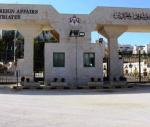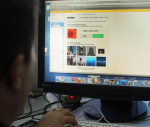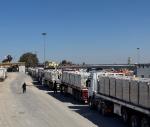You are here
Is the Red Sea-Dead Sea Canal project still happening?
Jan 18,2018 - Last updated at Jan 18,2018
This is a critical moment in the Jordanian-Israeli relations, as they have deteriorated over the past months, reaching their lowest point since the 1994 peace treaty was signed. This diplomatic crisis has halted the planned Jordanian-Israeli-Palestinian Red Sea-Dead Sea Canal (RSDSC) project, which the Jordanian government sees as vital to “save the Dead Sea” and to provide water to northern Jordan — where the water demand is highest. However, there are alternatives for how to “save the Dead Sea”, and to ensure water security to Jordan. In fact, this could be an opportunity for Jordan to save the Dead Sea by calling for rehabilitating the Jordan River, putting the environment at the centre of discussions. To ensure water security, Jordan could firstly work on a better water management — especially in the unsustainable agricultural water uses — and then consider regional desalination cooperation with Saudi Arabia.
The RSDSC project has been seen since the 1994 Jordanian-Israeli peace treaty as a way to support regional cooperation, interdependency, and normalisation of the relations between Jordan, Israel and Palestine. Jordan, Israel and Palestine signed an agreement for the implementation of the RSDSC in December 2015. The 2015 agreement was seen as a “win-win solution”, especially for Jordanians and Israelis, as it would provide water to northern Jordan — where the water demand is highest, and to southern Israel — among the most water scarce areas in Israel — through a water swap agreement.
Tensions started in July 2017 due to the killing of two Jordanians in Amman and the broken promise by the Israeli government to prosecute the Israeli embassy guard accused of the killings after he was allowed to leave Jordan and return to Israel. In the same month, protests erupted in Jerusalem following the decision by the Israeli government to install metal detectors at the entrances to the Old City’s holy esplanade, where Al Aqsa Mosque and Dome of the Rock are situated. In this context, Trump’s decision in December 2017 to move the US embassy to Jerusalem has further undermined the Jordan-Israel relations. In fact, as the legal custodian of the holy Mosques in Jerusalem’s Old City, Jordan’s King Abdullah is directly affected by developments in the city. One consequence of the current diplomatic crisis has been the suspension of the RSDSC.
For the Jordanian government, the RSDSC is a national priority, and key to resolve Jordan’s water scarcity. Some implications of not proceeding with the RSDSC would include a sustained decrease in Dead Sea water levels, enhanced water scarcity in large areas of Jordan, with obvious repercussions on state-society relations, economic outlook and stability. Therefore, the Jordanian government is considering alternative solutions, including a RSDSC without Israel and/or joint-desalination on the Red Sea in partnership with Saudi Arabia.
However, the regional dimension of the project is key to its economic viability, given that international donors attach high importance to this dimension. Other issues are more technical and relate in particular to the means by which Jordan will be able to pump water northwards from Aqaba to Amman. The option of a partnership with Saudi Arabia — building a joint desalination plant on the shores of the Red Sea — could also include an energy element that would allow Jordan to benefit from Saudi energy to pump water northwards. Setting aside the implementation times for such a project, one may wonder whether the new Saudi leadership — and the Trump administration — will be interested in supporting a Saudi-Jordanian project instead of the RSDSC, particularly given its potential to further strain Israeli-Jordanian relations.
Most of the water resources in Jordan are used for irrigation; but Jordan imports over 90 per cent of the food consumed in the country, and the contribution of the agricultural sector to the GDP is of less than 5 per cent. More can be done to improve the management of water in the agricultural sector. The main cause for the decreasing level of the Dead Sea — about one metre per year — is that the level of its main tributary — the Jordan River — has strongly decreased due to its overexploitation upstream; today only 3 per cent of its original flow reaches the Dead Sea.
Certainly, bilateral cooperation on water issues between the Jordanian and Israeli governments has faced worst crises. Yet, both countries have also been cooperating on such issues for many decades, even before the formal 1994 peace treaty was signed. Such trends would seem to point to a likely resolution of the crisis in the near future, yet, while in the past the US has played a central role in pushing for regional cooperation, the Trump administration appears to no longer be able (or willing) to play such a role, adding a considerable aura of uncertainty over this. Finally, while the RSDSC project may help Jordan to ensure water security, will it really “save the Dead Sea”? Would it not be environmentally best to rehabilitate the Jordan River, and consequently save the Dead Sea? Can Jordan ensure water security through better water management, especially in the unsustainable agricultural sector?
Hussam Hussein is a postdoctoral research fellow on water security at the Issam Fares Institute for Public Policy and International Affairs, American University of Beirut, Lebanon; and a visiting fellow at the Water Security Research Centre, School of International Development, University of East Anglia, Norwich, UK. He contributed this article to The Jordan Times.













